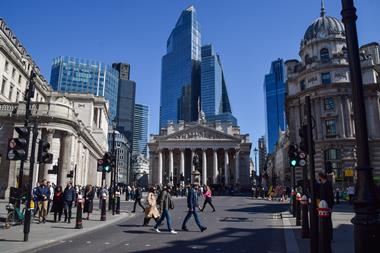In the first of a two-part feature, Peter Farmer reviews the key characteristics of motorcycle insurance and the different types of cover available
'Like all other users of mechanically propelled vehicles on Britain's roads, motorcyclists are obliged under the terms of the Road Traffic Act 1998 to carry third party liability insurance. The term 'motorcycle' takes in any mechanically propelled craft with two wheels, whether or not any sidecar or trailer is attached.
But there are important differences between four and two wheeled vehicles which insurers are becoming increasingly sophisticated at taking into account.
From a road user's point of view the key attractions of bikes over cars include better fuel economy in an age of rising petrol prices, the ability to beat road congestion, and perhaps certain associations of glamour and personal freedom.
On the downside, bikers are exposed to the elements and will find it much harder to handle their vehicle safely in wet, dark or icy conditions. Bike owners range from eager young
16 year-olds to affluent middle-aged executives who can easily afford more power than they will necessarily be familiar with handling. The scale of risk presented to insurers therefore varies widely.
Broadly, motorcycles can be separated into three categories:
The main types of cover bikers may wish to purchase include compulsory third party liability cover against the rider's legal liability for injury to third parties or damage to third party property, cover for damage to the rider's own bike, and cover for theft of the motorcycle, and for loss or damage to accessories.
Threat of theft
Bikes can cost anything from £500 to £20,000. Those with machines worth several thousands of pounds upwards will typically want to cover themselves against theft - regrettably an all too common problem in the UK, particularly in the case of scooters, with around 100 motorcycles stolen every day.
Serious bikers will often have spent hundreds or thousands of pounds on helmets, leathers, boots and gloves and will want to protect these against damage or theft as well.
Some policies include an option for this type of cover. Otherwise it may be necessary to arrange cover as part of a household policy under the heading of cover away from home.
The statistics for deaths and serious injury to motorcyclists make sobering reading. According to figures produced by the Department for Transport, 693 bikers were killed in 2003, and almost exactly ten times this number (6,959) were seriously injured. Bikers make up just 1% of traffic, but account for 20% of deaths and serious injuries.
Some of these casualties may be covered by third party liability claims, but where the motorcyclist is at fault they will not be insured for their own injuries. Given this, bikers may also be well advised to consider personal accident cover. This is sometimes available as an extension to cover under a motorcycle policy, but the extent of cover is typically limited to severe injury or death, so those requiring cover for more minor injuries would normally be better advised to take out a separate personal accident policy.
Poor risk
As with other forms of motor insurance, there are four basic types of cover available to motorcyclists: Road Traffic Act (RTA) only cover, third party only, third party fire and theft, and comprehensive. The latter two types will be covered in more detail in next week's article.
In practice motorcyclists very rarely take up RTA cover, which is very restricted. Insurers are generally only prepared to quote on this basis where the prospective insured is deemed to be a particularly poor risk.
Third party only cover offers no protection for the property of the insured and focuses on liability for injury to third parties or damage to their property. In respect of the former, cover is unlimited, as required by the RTA.
The legal minimum cover for damage to third party property is £250,000, but many policies include cover up to £20m for property damage plus a maximum £5m for legal costs.
Cover is also included for legal costs incurred in defending a claim and representation where certain types of prosecution are brought against the insured.
Insurers' motivation for including this cover is not entirely disinterested, since if the policyholder were not adequately represented in court, the resulting criminal prosecution would influence the outcome of any civil claim against the policyholder.
Third party only cover may also include cover for any or all of the following: driving another bike not covered by the policy, other named individuals driving the insured's motorcycle with permission, third party liability cover to indemnify passengers who may cause an accident.
In part two of this article we will go on to consider third party fire and theft and comprehensive cover options and the various exclusions and extensions that go with them, look at claims, underwriting and rating considerations, and review the conditions and exceptions commonly associated with motorcycle insurance. IT
' Peter Farmer is a director of Searchlight Solutions. This feature is based on materials available on Searchlight's Tick e-learning system
Test yourself on motorcycle insurance
Q1: Vehicles with engine capacities below which sizes may qualify as light motorcycles and mopeds respectively?
Q2: How old must an individual be to qualify for a light motorcycle licence?
Q3: Approximately how many motorcycles are stolen each day in the UK?
Q4: Motorcyclists account for what proportion of deaths and serious injuries on Britain's roads?
Q5: What is the legal minimum limit for cover against damage to third party property?
Answers
1. 125cc (light motorcycle) and 50cc (moped).
2. At least 17.
3. Around 100.
4. 20%. 5. £250,000
Hosted by comedian and actor Tom Allen, 34 Gold, 23 Silver and 22 Bronze awards were handed out across an amazing 34 categories recognising brilliance and innovation right across the breadth of UK general insurance.












































